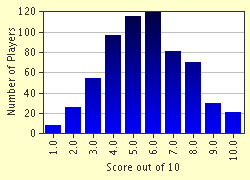Quiz Answer Key and Fun Facts
1. Mercury was named by the Romans, but for what reason?
2. Old astronomers called Venus the morning star and the evening star. Why was that?
3. The distance from the Sun to the Earth is about 150 million kilometres. Earth's atmosphere is made up mainly of nitrogen. What percentage does nitrogen make up of the Earth's atmosphere?
4. The fourth planet from the Sun is Mars, also referred to as the Red Planet. The colour of its rocks and soil is the reason why it is called the Red Planet. The ancient Egyptians called this planet "Her Descher" which meant?
5. Jupiter is the fifth and biggest planet of our solar system. If Jupiter was hollow instead of having the most mass of the nine planets, more than one thousand Earths would fit inside it. Jupiter has a ring system but it cannot be seen with the naked eye. When was this ring system discovered?
6. The sixth planet of the Solar System is Saturn. Voyager 1 discovered a lot of what we know about Saturn. Saturn's day takes 10 hours and 39 minutes. How long does Saturn take to make a full orbit around the Sun?
7. Uranus is the seventh from the Sun. The distance between Uranus and the Sun is about 2.87 billion kilometres. We know of 22 satellites that orbit Uranus. What are the names of the two largest satellites?
8. 4,504,300,000 kilometres away from the Sun is Neptune, the eighth planet and the last of the ice giants. Compared to Jupiter, it could only hold a measly sixty Earths. Six moons of Neptune's eight were discovered by Voyager. On the 23rd of September, 1846 Neptune was discovered but by whom?
9. Finally comes Pluto, the smallest and is usually the farthest planetoid of the Solar System because it is closer to the Sun than Neptune for twenty years. When was this planetoid discovered?
10. The Solar System doesn't only include planets but also moons, asteroids and various other things. Asteroids do orbit the Sun but they are too small to be planets. What asteroid has a diameter of about 1000 kilometres?
Source: Author
giantcomet4
This quiz was reviewed by FunTrivia editor
crisw before going online.
Any errors found in FunTrivia content are routinely corrected through our feedback system.


